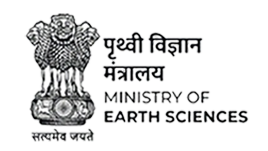









| Abstract Submission No. | ABS-07-0364 |
| Title of Abstract | Diversity assessment of deep-sea organisms from Seamounts of Arabian Sea using environmental DNA metabarcoding |
| Authors | Devika Raj*, Jasmin C, Anas Abdulaziz |
| Organisation | CSIR-National institute of Oceanography |
| Address | CSIR-NIO, RCK Kochi, Kerala, India Pincode: 682018 E-mail: rajkdevika@outlook.com |
| Country | India |
| Presentation | Oral |
| Abstract | Seamounts are the elevated mountain like structures in the deep sea which accommodates a plethora of organisms. The diversity of these organisms is mostly studied based on morphological taxonomic approaches. In the current study, we employed metabarcoding of environmental DNA (eDNA) to delineate the diversity of organisms in two seamounts (SMS2 and SMS3 off Mangalore, Lat between 12˚ and 14˚N, Lon between 72˚ and 74˚E) of Arabian Sea for the first time. The summit of the selected seamounts was interacting with the oxygen minimum waters at ~350 to 500 m depth at off Mangalore. The cytochrome oxidase-I (COI) gene was amplified from the eDNA of water samples collected from the summit and periphery of the seamounts. The COI-gene amplicons were sequenced following Oxford Nanopore sequencing technology, and the sequences were analysed using QIIME-2 bioinformatic pipeline. Nearly 70 % of the sequences were not matching with COI-database (BOLD systems), indicating the existence of novel organisms in the region. The diversity indices, Pielou and Simpson evenness, show no significant variation in the diversity of organisms between samples collected from the summit and periphery of seamounts. On the other hand, there was a significant difference in the richness of organisms as indicated by Chao1 and Shannon index. Arthropods were dominant in all stations with maximum (86 %) and minimum (27 %) at the periphery of SMS2 and summit of SMS3 respectively. Protozoans were found as the second dominant phylum with their contribution topping (40 %) at the terrace of Mangalore and a lowest at the periphery of SMS2 (7 %). Other phyla detected in the study area were Annelida, Chordata, Cnidaria, Mollusca, Porifera, Nemertea, Echinodermata, Bryozoa, Onychophora, Placozoa, Chaetognatha, Brachiopoda, Ciliophora and Nematoda. The results of the study indicate the existence of diverse group of organisms in the seamounts interacting with the oxygen minimum zones in the Arabian sea, with significant difference in the species richness between the summit and the periphery. Our results also highlight the importance of eDNA metabarcoding techniques for understanding the diversity of organisms in deep sea ecosystems. |
| Keywords | Seamount, deep-sea, environmental DNA, metabarcoding, diversity |
| For Awards | yes |